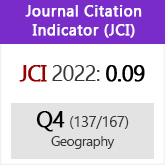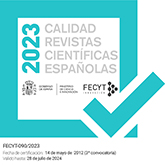Veinte años de migraciones españolas: 1982-2002. Cambio de signo e intensidad
DOI:
https://doi.org/10.3989/egeogr.2004.i256.175Keywords:
Contemporary international labor migration to Spain, African, Latin American, and Asian immigrants to Spain, Spanish immigration policyAbstract
This paper deals with the changes in migration that have taken place recently in Spain. After joining the EC in 1986, the new socioeconomic and political standards of Spain have attracted many labor migrants from the Third World. African immigrants, 77% of whom are Moroccan, represent the largest segment among them. Africans find ready employment in commercial agriculture, construction, and services on the Iberian Peninsula. Besides, Latin America and Southeast Asia are sending greater and greater numbers of workers to Spain. Since the passing of the first Alien Law in 1985, Spanish legislation has been subjected to continuous reform. This has achieved three underlying goals: improvement of administrative procedures and the working conditions for immigrants, as well as the overcoming of many obstacles to their integration to society.
Downloads
Download data is not yet available.
Downloads
Published
2004-09-30
How to Cite
Cebrián, J. A., & Bodega, M. I. (2004). Veinte años de migraciones españolas: 1982-2002. Cambio de signo e intensidad. Estudios Geográficos, 65(256), 415–444. https://doi.org/10.3989/egeogr.2004.i256.175
Issue
Section
Articles
License
Copyright (c) 2004 Consejo Superior de Investigaciones Científicas (CSIC)

This work is licensed under a Creative Commons Attribution 4.0 International License.
© CSIC. Manuscripts published in both the printed and online versions of this Journal are the property of Consejo Superior de Investigaciones Científicas, and quoting this source is a requirement for any partial or full reproduction.All contents of this electronic edition, except where otherwise noted, are distributed under a “Creative Commons Attribution 4.0 International” (CC BY 4.0) License. You may read here the basic information and the legal text of the license. The indication of the CC BY 4.0 License must be expressly stated in this way when necessary.
Self-archiving in repositories, personal webpages or similar, of any version other than the published by the Editor, is not allowed.















